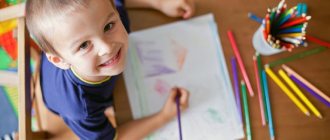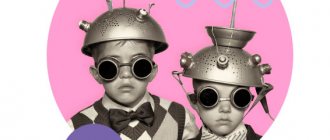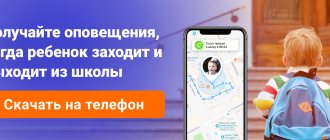Features of cognitive activity of preschool children
Attention! The most important function in the formation of a child’s cognitive activity is perception.
All the fundamental principles for the further development of the human psyche are built on this basic feature. Thanks to this function, the preschooler is able to navigate the world around him. Perception develops in a playful way - put together a beautiful puzzle, make a multi-colored pyramid, arrange triangles into molds, and so on.
From one to three years
By selecting parts of figures by color, shape, size and other characteristics, combining and comparing them with each other, the child receives practical application of the acquired knowledge.
Naturally, a child cannot achieve an ideal result right away.
To some extent, due to fairly serious errors, the correct result is formed.
Approximately closer to two years, the number of actions performed decreases.
Now visual perception begins to play a role - the correctness/incorrectness of a particular movement is determined by eye.
At the same time, thinking also develops along with perception. A kind of logic appears. So, in order to get the ball from the table, you should move a chair towards it, stand on it, and then take the ball. While pouring flour into the seeder, he realizes that it is falling out through the holes.
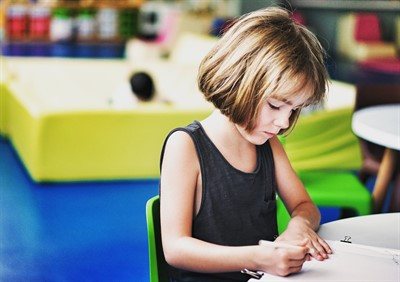
Thanks to this, the child begins to open new horizons with great zeal.
Rolling, rolling and sliding - these skills are also formed in the process of active mobile activity.
Thus, upon reaching the age of three, the child is able not to waste extra time on experiments, but to turn it all over in his head, envisioning positive or negative versions of the action.
In addition to independently studying the world around him, the child learns information that interests him from adults. Why does the dog bark? It's a cat? Is your aunt smiling? Is sand falling? Etc.
Thus, based on interaction with the world and communication with others, the baby develops his cognitive function and receives information about life around him.
At the age of 3 – 5 years
The nature of the child’s cognitive activity becomes more pronounced:
- Knowledge about the world is obtained more fully.
- New means of orientation in the world have been identified.
Figurative thinking and the ability to understand various symbols appear. A phenomenon arises, in addition to perception, as sensation. Visual acuity improves, phonetic hearing increases. But at the same time, fantasy is not yet fully developed; the child is a realist. What I see exists. What I don’t see is not there. Curiosity begins to develop with greater force, the child asks more and more “why?”
By 5–6 years
Intelligence begins to develop, the ability to model and experiment appears. The preschooler begins to carry out experiments on his own.
The concept and essence of cognitive activity of a preschooler
The following levels of cognitive activity of preschool children are distinguished:
The first level is reproductive activity. It is characterized by the child’s efforts to understand, remember, reproduce knowledge, and master the method of applying it according to a model. This stage is characterized by the inconstancy of the child’s volitional efforts, lack of interest in deepening knowledge, and the absence of the question “Why?”
The second level is interpretive activity. This activity is characterized by the child’s effort to find the meaning of the content being studied, the desire to identify connections between phenomena and processes, and master ways of applying knowledge in changed conditions. An indicator of interpretive activity, according to the scientist, can be a greater stability of volitional effort, which is expressed in the fact that the child makes an effort to complete the task, does not refuse to complete the task when it is difficult, but looks for ways to solve it.
The third level is creative activity, which is characterized by the child’s interest and desire not only to deeply penetrate into the essence of phenomena and their relationships, but also to find a new path for them [4, p. 188]. A characteristic feature of this level of activity is the manifestation of the child’s high volitional qualities, perseverance and perseverance in achieving goals, and broad and strong cognitive interests. This level of activity is achieved by exciting a high degree of discrepancy between what the child knew, what he had already encountered in his experience, and new information, a new phenomenon.
Thus, cognitive activity is a personal formation, an active state that expresses the child’s intellectual and emotional reaction to the learning process: the desire for knowledge, mental stress, the manifestation of volitional efforts in the process of acquiring knowledge, the child’s responsiveness to the learning process, the completion of individual and general tasks, interest in the activities of adults and other children. Animation material is a creative, purposeful activity during which children learn more about the phenomena of the surrounding reality in an entertaining way. Incorporating engaging material into classes makes learning fun, creates a joyful work environment, and helps children overcome learning difficulties. The use of entertaining material is justified only if it is closely related to the topic of the lesson, organically combined with educational material and consistent with didactic goals.
Researchers offer definitions for the following types of entertainment materials.
A riddle is an image or expression that needs to be solved or interpreted.
A phrase is a specially invented phrase with a complex selection of sounds, a quickly pronounced humorous statement.
A rebus is a riddle in which a word or phrase is represented by a combination of numbers, letters or symbols.
A proverb is a short folk saying with edifying content, a popular aphorism.
A proverb is a short, stable expression, usually figurative, which, unlike a saying, is not a complete statement.
A quiz is a game with answers to questions, usually related to a common theme.
Crossword is a task game in which a figure from rows of empty cells is filled with crossed out words with meanings specified by the game conditions.
Chainword is a game task in which the cells in a chain are filled with words in such a way that the last letter of one word introduces the next one.
Charade is a riddle in which the hidden word is divided into several parts - individual words; such a mystery is presented in vivid scenes.
A competition is a competition whose purpose is to reward the best participants and the best works [11, p. 39].
Entertaining material is considered one of the means to ensure a rational balance between the teacher’s work in the classroom and outside it. Such material can be included in the main part of the lesson or used at the end of the lesson when children's mental activity weakens. Elements of entertainment: games, everything unusual and unexpected awaken a sense of wonder in children, helping them cope with any educational material.
Development of cognitive abilities, activity and interest
Important! In order to fully develop the child’s cognitive abilities, special classes should be conducted. The most interesting thing at this age is play. Therefore, all information should be carried out in game mode.
On average, such a game should take no more than 15–20 minutes, so as not to cause rejection in the baby. During classes, you need to show everything by example: in which hand to hold a spoon, how to take off and put on clothes.
Reference! Children love to have fairy tales reread to them or a story told again. This way the child remembers information better.
You should not make excessive demands or scold your child for misunderstanding or poor assimilation of knowledge. Remember, this can only discourage you from doing anything. This is the wrong strategy. It is better to praise the preschooler for small successes and help correct shortcomings.
Exercises
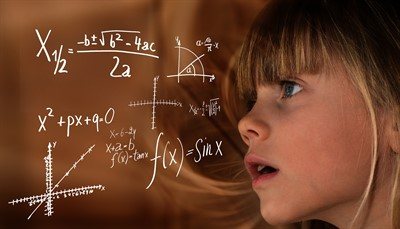
1. From one to three years:
They use cubes, various figures (not too small, a child can swallow them), assembling puzzles, fashioning elementary figures from plasticine and role-playing games (seller - buyer, hairdresser - client, and of course, daughters - mothers).
2. Three to four years:
Learning the alphabet and reading by syllables, learning basic mathematical calculations (a bear plus a bear, how many bears?), reading children's books, talking about them (why is the queen evil?), modeling animals and plants from plasticine, creating crafts, collecting Legos, construction sets.
3. From four to five years:
Games for comparison, difference (which mosaic is missing, which picture is extra). The ability to distinguish colors, coordinate nouns and adjectives, etc. develops.
Features of cognitive development of preschoolers 4-5 years old
In my opinion, the development of creative activity of preschoolers is facilitated by the practical activities of children - manual labor, since making crafts from various materials fully meets the needs, interests and capabilities of preschool children.
At the age of 4-5 years, a preschooler’s creative imagination predominates; the plots of children’s games, drawings, and fictional stories become richer and more varied. The child writes stories, creates new characters, looks for ways to realize his creative ideas, and comes up with new games. But it is still difficult for children to imagine without acting. That is, in order to imagine, fantasize, children 4-5 years old need to act (build, tell stories, draw, etc.)
A child of this age should have the opportunity to develop his play imagination. Allow children to use a variety of “unnecessary” (in your opinion) things: some sticks, bars, pieces of iron and other rubbish. It is impossible to predict a child's imagination. It is in play that a child of the fourth or fifth year of life realizes his desire for independence through modeling the life of adults. He discovers this world of human relations, different types of activities, social functions of people.
In play, the child shows miracles of patience, perseverance, and discipline.
Thus,
imagination is not only a prerequisite for the effective assimilation of new knowledge by children, but is also a condition for the creative transformation of children’s existing knowledge, promotes personal self-development, that is, it largely determines the effectiveness of educational activities in preschool educational institutions.
4. FORMATION OF PRIMARY REPRESENTATIONS ABOUT THEMSELVES, OTHER PEOPLE, OBJECTS OF THE AROUND WORLD, ABOUT THE PROPERTIES AND RELATIONSHIPS OF OBJECTS OF THE ENVIRONMENT IN CHILDREN 4-5 YEARS OLD
Introducing a child to the social world and building relationships with other people, according to most psychologists, begins with the formation of ideas about oneself.
Formed ideas about oneself influence the formation of a child’s relationships with people (adults and peers) and the development of all types of children’s activities. (1)
A 4-5 year old child is still not aware of social norms and rules of behavior, but he is already beginning to develop generalized ideas about how he should (shouldn’t) behave. A child can, on his own initiative, put away toys, perform simple work duties, and complete a task. However, following such rules is often unstable - the baby is easily distracted by what is more interesting to them, and it happens that the child behaves well only in the presence of the people who are most significant to him. Children are good at identifying non-compliance with norms and rules not only in the behavior of others, but also in their own and emotionally experience it, which increases their ability to regulate behavior. Concentration on one’s own well-being appears, and the child begins to worry about the topic of his own health. By the age of 4-5, a child is able to simply characterize his state of health and attract the attention of an adult in case of illness. The behavior of a 4-5 year old child is not as impulsive and spontaneous as at 3-4 years old, although in some situations he still needs a reminder from an adult or peers about the need to adhere to certain norms and rules. Children have a need for respect from adults and their praise, so the child reacts to adults’ comments with increased sensitivity. Communication with peers is still closely intertwined with other types of children's activities (play, work, etc.), however, situations of pure communication are already noted. At this age, children develop ideas about how girls should behave and how boys should behave (“I’m a boy, I wear pants, not dresses, I have short hair”), about the gender of people of different ages (a boy is a son , grandson, brother, father, man; girl - daughter, granddaughter, sister, mother, woman). By the age of 5, children have an understanding of the characteristics of the most common male and female professions, types of recreation, specific behavior in communicating with other people, individual female and male qualities, and are able to recognize and evaluate the emotional states and actions of adults of different sexes. In this age period, a characteristic feature of a child’s speech is its use for communication with peers. And communication, in turn, develops speech. The child asks questions, tells fairy tales, reasons, fantasizes, retells, exchanges impressions, etc. Now he can name the qualities of objects, their signs, relationships, etc. His perception becomes meaningful, purposeful, and analytical. Between the fourth and fifth years, a child can memorize purposefully. Neither before nor after this period does the child remember the most varied material with such ease. But the memory of a child of the fourth year of life and the beginning of the fifth is mainly in the nature of involuntary memorization. Everything interesting for a child is remembered by itself. It is difficult to remember abstract concepts: days of the week, months, seasons, etc. Thanks to the development of speech, thinking, memory, perception and, mainly, imagination, a four- to five-year-old child perceives a fairy tale and discovers in it his own solution to pressing life problems. The child does not like instructions, and the fairy tale does not teach him directly. A fairy tale offers a child images that he likes and that help him solve moral problems. All the characters in it are either good or bad. This helps the child separate good from evil and somehow organize his own complex feelings. A child wants to be like a positive hero, and thus a fairy tale instills in him kindness, a sense of justice, the ability to empathize, that is, it develops in him an emotional attitude towards the environment in accordance with the values, ideals and standards of life. If adults regularly read children's books to preschoolers, reading can become a sustainable need. Children willingly answer questions related to the analysis of the work and give explanations for the actions of the characters. Illustrations play a significant role in the accumulation of reading experience. At the age of 4-5 years, children are able to look at a book for a long time and talk about its contents based on the picture. They easily find their favorite book among others, they can remember the title of the work and the author. They strive to bring book situations to life, imitate the heroes of works, and enjoy playing role-playing games based on the plots of fairy tales and short stories. Children often come up with their own plot twists. They also make their suggestions when dramatizing individual passages of the works they read.
Development of cognitive and research activities
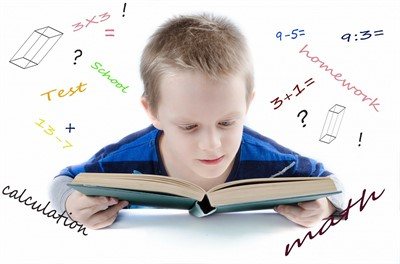
From five to seven years of age, the cognitive activity of a preschooler begins to include research and experimentation.
You can take standard games (hide and seek) or play a game - find the hidden thing in the room, focusing on the “cold - hot” clues.
You should play the following educational game: several children take turns trying to explain the meaning of a word without naming it, the child must guess.
At preschool age, children learn to draw conclusions and conclusions, conduct experiments, through trial and error. It is very good at this time to develop creative abilities, form moral and moral values by showing high-quality cartoons and reading good books.
It is also important to pay attention to the child’s speech development. Practice on your own if you see any benefit in it, but when your child does not pronounce a certain letter for a long time or makes severe articulation errors, contact a speech therapist.
